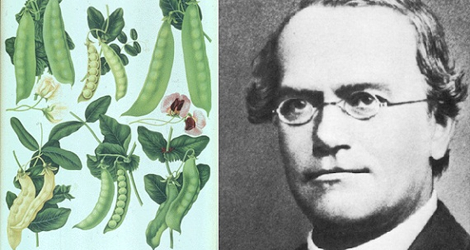Mendelian Inheritance Patterns and Their Characteristic Features
Overview
Traits of all kinds can be tracked through a family health history. Some of those traits have very complex, and sometimes random, appearances within a family while others seem to show up in a consistent and predictable pattern. In the 1860s, a now famous Augustinian monk noticed the same thing in tracing the family history of a number of garden plants. Gregor Mendel is considered the father of genetics because of his careful recording and observations of how different traits in pea plants could be tracked from generation to generation.
Although Mendel did not know it at the time, what he had discovered was a system of two alleles per gene per trait. In modern understanding, we call these alleles and can assume from Mendel's work that each trait had two alleles for each of the genes controlling each of the traits he studied. In addition, the genes controlling the traits he was studying were all independent of each other, having no influence on each other. It just so happens that humans, like the peas Mendel studied, have two copies of each gene in each cell. Sometimes, the copies of the gene (alleles) have the same sequence. It is also possible that the alleles have slightly different sequences. Although the sequences do not usually differ much, it only takes a small change in the right place to change the trait that is expressed.
It is the combination of alleles for each gene that Mendel was able to trace from generation to generation of pea plant. He traced these via the traits he was interested in, but because those traits were controlled exclusively by only one gene each, he was able to determine how alleles were passed from one generation to the next. This allowed Mendel to develop the foundational principles of genetics we still use today.
It just so happens that humans, like the peas Mendel studied, have two copies of each gene in each cell.
